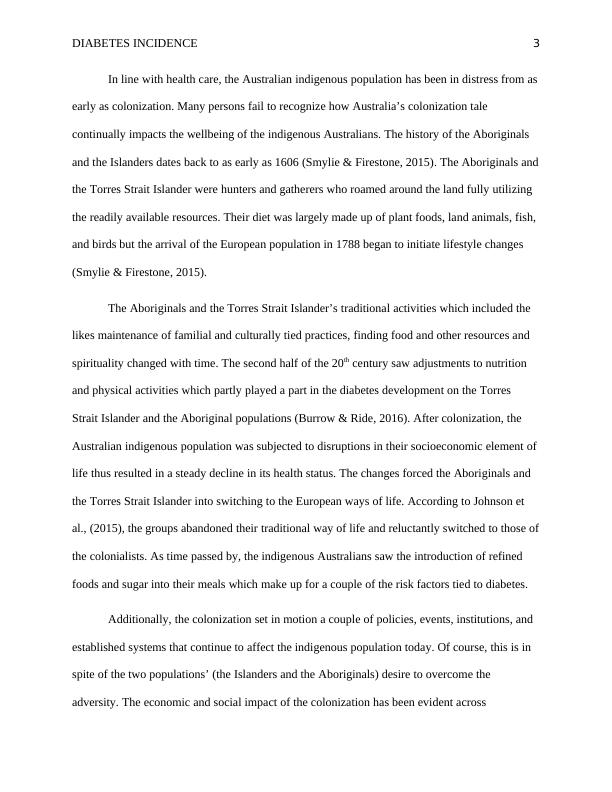Diabetes Incidence among the Australian Indigenous Population
Explore a current health issue for Aboriginal and Torres Strait Islander Australians, describe the health issue, use current statistics to illustrate the burden, discuss the impact of social determinants of health, and analyze the history of colonization on the development of the health issue.
10 Pages2433 Words182 Views
Added on 2022-10-16
About This Document
This article discusses the incidence of diabetes among the Australian Indigenous population, particularly the Torres Strait Islanders and the Aboriginals. It highlights the social, historical, and culturally-related determinants of health among other sets of risk related factors. The article also discusses the impact of colonization on the health of the indigenous Australians and the challenges they face in accessing effective chronic care.
Diabetes Incidence among the Australian Indigenous Population
Explore a current health issue for Aboriginal and Torres Strait Islander Australians, describe the health issue, use current statistics to illustrate the burden, discuss the impact of social determinants of health, and analyze the history of colonization on the development of the health issue.
Added on 2022-10-16
ShareRelated Documents
End of preview
Want to access all the pages? Upload your documents or become a member.
INDIGENOUS HEALTH ISSUE.
|11
|3087
|1
Aboriginal and Torres Strait Islander deaths are significantly more likely to die in their native Australians than their non-indigenous counterparts
|8
|1791
|165
The sociological imagination template
|11
|2654
|47
Indigenous Australians and diabetes PDF
|10
|2608
|87
Chronic Kidney Disease among Aboriginal and Torres Strait Islander People
|7
|2496
|199
Diabetes in Australia: Impact on Aboriginal and Torres Strait Islander Australians
|8
|2143
|200



